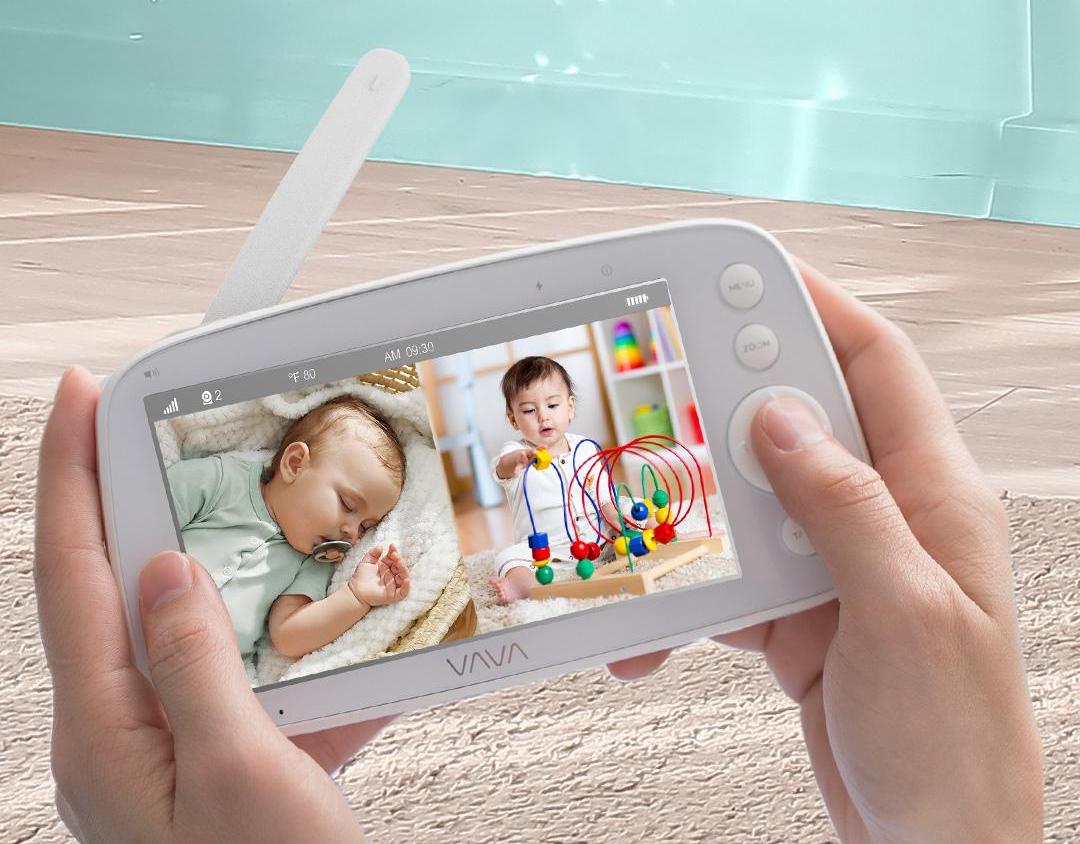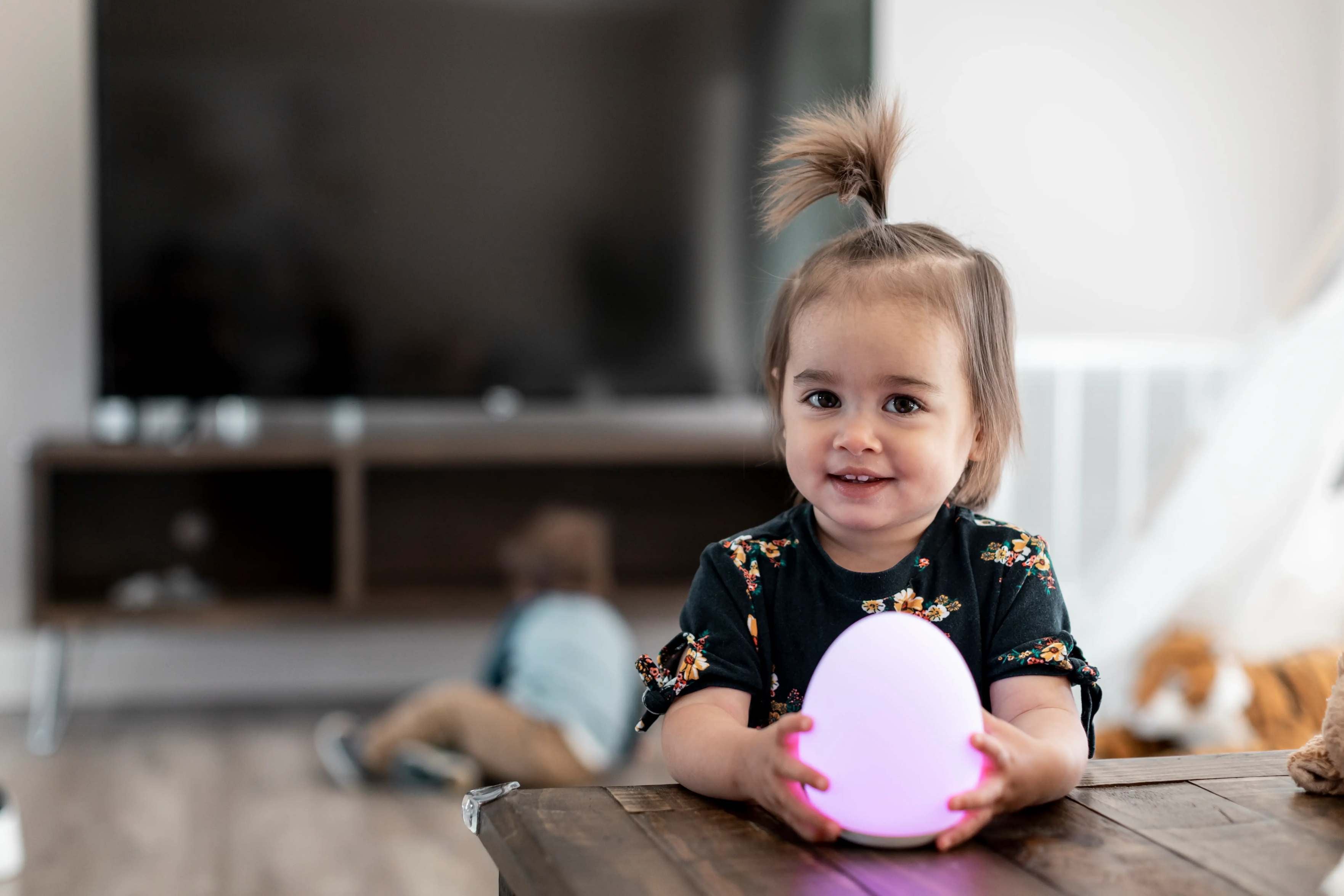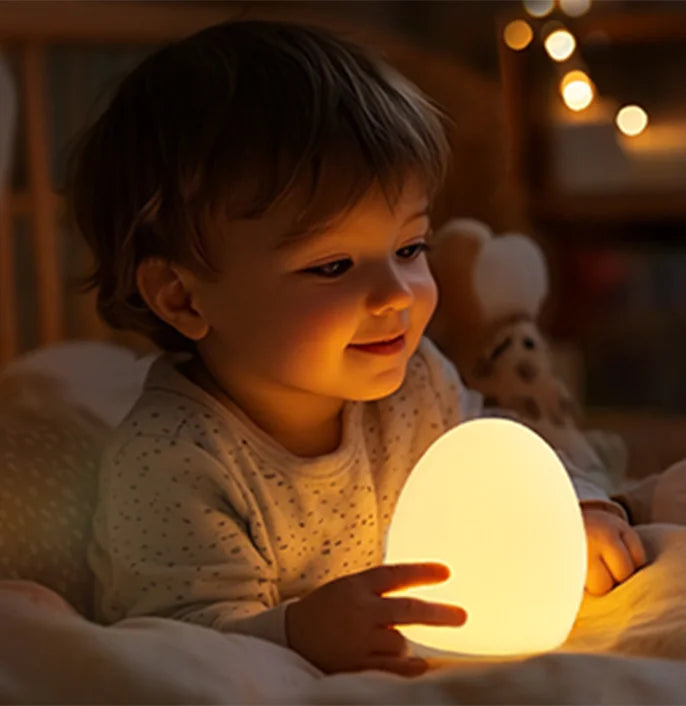After a long evening of binge-watching your favorite TV shows, your eyes might well feel tired and strained. Does that mean you should limit your watching? Not necessarily; the problem has more to do with your environment than the length of time you spend glued to the TV.
Fortunately, there is a relatively easy solution to this problem. But before we get to that, let's take a look at the cause.
Bright TV in a Dark Room

Eye strain is most common after watching a bright TV in an otherwise dark room. In a dark room, your pupils are normally wide open (dilated) to let more light in. If you watch a bright TV across that room, your pupils don't fully constrict because the TV occupies a relatively small portion of your field of view, and there's a lot of darkness around it. So, your eyes are fooled into letting in more light than they should.
Why not simply sit closer to the screen? It would occupy more of your field of view, which will cause your pupils to constrict more. But to fill enough of your field of view to cause appropriate pupil constriction, you might have to sit closer than the recommended distance for the ideal viewing experience. Plus, sitting too close can also cause eye strain by forcing your eye muscles to focus at a close distance for extended periods.
Another problem is the high brightness of modern TVs, especially in this era of high dynamic range. OLED TVs can achieve a peak brightness of around 700 nits, while LCD TV can easily reach 1000 to 2000 nits or even higher. (Don't worry about what a nit is; it's just a unit of brightness.) By contrast, TVs from the days of standard dynamic range typically reached somewhere around 100 nits. So, a modern TV puts out seven to 20 times as much light as an older SDR TV, especially if you watch a lot of HDR content. (A properly calibrated HDR TV outputs only 100 nits when displaying SDR content, but even that can cause eye strain when the TV is too far away in a dark room. Plus, many people watch their TV in "vivid" mode, so it's always much brighter than a calibrated mode.)
TV Solutions

The easiest way to reduce eye strain when watching a TV is to watch with the room lights on. Granted, many people—including myself—much prefer to watch with the lights off, because that allows greater immersion in the story without visual distractions.
If you want to keep the lights off, try reducing the TV's light output. Virtually all LCD TVs (including so-called "LED" and "QLED" TVs) have a backlight control in the picture menu, which controls the amount of light produced by the TV. OLED TVs have a similar control called something like Cell Light. By default, this control is usually at or near its highest setting. Simply turn down this control to lower the amount of light emanating from the TV. This will reduce the brightness of the image—and thus reduce eye strain—and also give you better blacks.
Another solution is something called a bias light. This is a special light fixture, typically a long tubular light that originally consisted of a fluorescent tube but now uses LEDs, that is placed behind the TV screen. These tube lights can even be mounted to the back edges of the screen—top, bottom, and both sides. A bias light illuminates the area behind the TV and causes your pupils to constrict more than the light from the TV itself, reducing eye strain. However, a bias light should be a specific color of white (technically called D65) and 10% of the peak brightness of the display so it doesn't affect your perception of the images on the screen.
The Best Solution

By far, the best way to reduce eye strain in a dark room is a bigger, less-bright picture that fills more of your field of view. And the best, most cost-effective way to achieve that is with a projector.
The image from a projector is much larger than all but a handful of prohibitively expensive flat-panel TVs. A larger image fills more of your field of view, so your pupils constrict more appropriately for the brightness of the image rather than the dark room. Plus, you can sit father from the screen, which means your eye muscles don't have to work as hard focusing at a close distance.
In addition, it's not nearly as bright. You might be surprised that a less-bright image is better for you, but in terms of eye strain in a dark room, it really is. For example, in commercial movie theaters, the brightness ranges from 48 nits in most theaters to 108 nits in Dolby Cinemas. That's much lower than any modern TV, and it's in a completely darkened room with a very large screen.
Consumer projectors at home are often somewhat brighter. For example, ProjectorCentral.com recently reviewed the VAVA 4K UST projector and measured its brightness on a 92" Stewart StudioTek 130 screen in the projector's Standard/Warm mode to be 151 nits (44.1 foot-lamberts). That's higher than commercial cinemas, but it's still a lot lower than virtually all modern TVs.
Keep in mind, the brightness of a projected image depends on the light output of the projector as well as the size and gain of the screen. In the case of the VAVA review at ProjectorCentral, the screen used for the measurements had a gain of 1.3; most UST screens have lower gain, down to 0.6 or so. With such a UST screen of the same size, the brightness of the image from the VAVA would be roughly half as much, probably around 75 nits.
Even though a projected image is much less bright than a TV, some experts still recommend using a bias light behind the screen. This is a good idea if you watch a projector for an extended period and still experience eye strain.
So, there you have it: To avoid eye strain while watching TV, get a bigger screen with lower brightness. As it turns out, a projector is the perfect solution, and it doesn't have to cost an arm and a leg—or an eye!





Share: